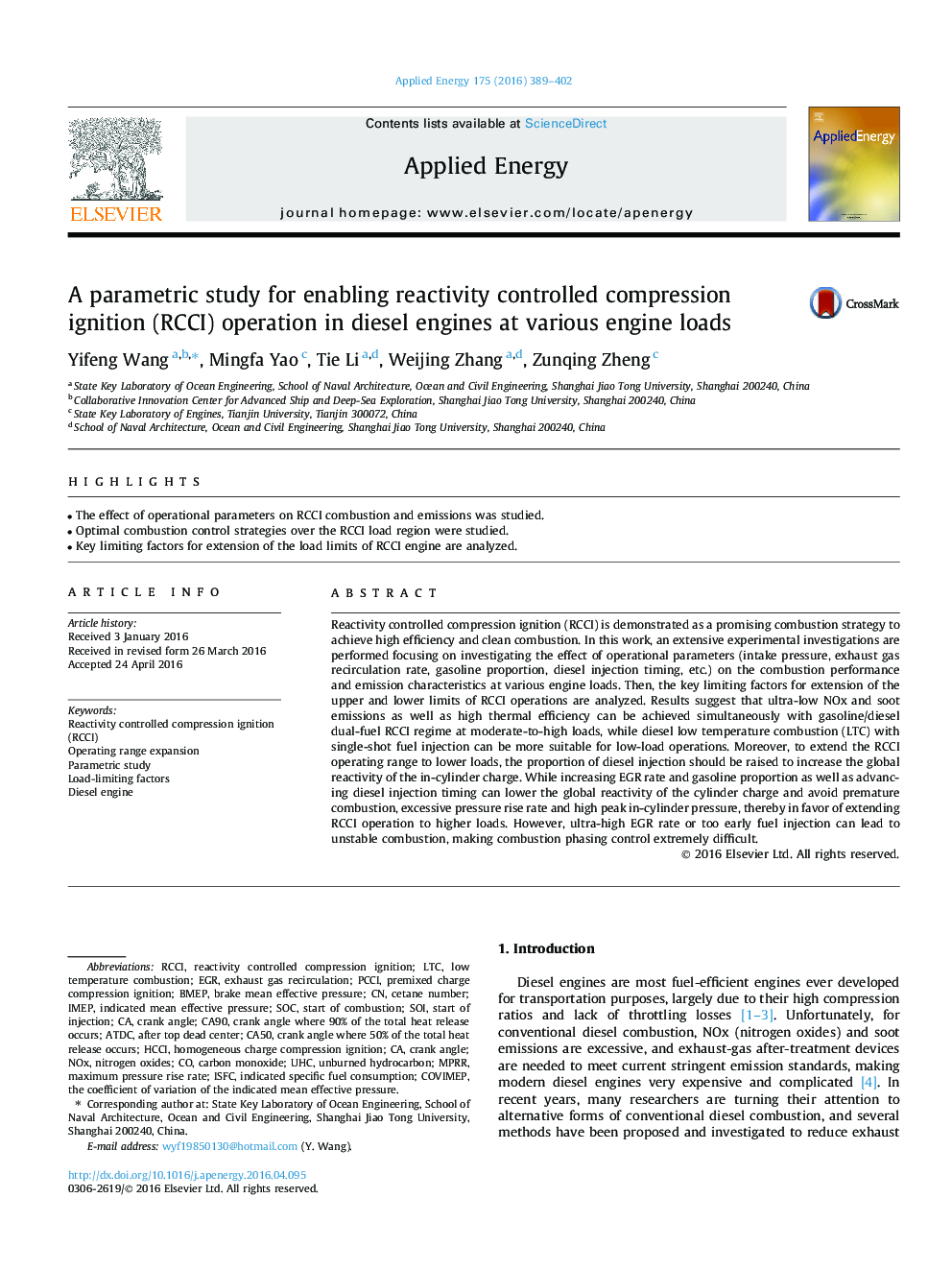| Article ID | Journal | Published Year | Pages | File Type |
|---|---|---|---|---|
| 6683017 | Applied Energy | 2016 | 14 Pages |
Abstract
Reactivity controlled compression ignition (RCCI) is demonstrated as a promising combustion strategy to achieve high efficiency and clean combustion. In this work, an extensive experimental investigations are performed focusing on investigating the effect of operational parameters (intake pressure, exhaust gas recirculation rate, gasoline proportion, diesel injection timing, etc.) on the combustion performance and emission characteristics at various engine loads. Then, the key limiting factors for extension of the upper and lower limits of RCCI operations are analyzed. Results suggest that ultra-low NOx and soot emissions as well as high thermal efficiency can be achieved simultaneously with gasoline/diesel dual-fuel RCCI regime at moderate-to-high loads, while diesel low temperature combustion (LTC) with single-shot fuel injection can be more suitable for low-load operations. Moreover, to extend the RCCI operating range to lower loads, the proportion of diesel injection should be raised to increase the global reactivity of the in-cylinder charge. While increasing EGR rate and gasoline proportion as well as advancing diesel injection timing can lower the global reactivity of the cylinder charge and avoid premature combustion, excessive pressure rise rate and high peak in-cylinder pressure, thereby in favor of extending RCCI operation to higher loads. However, ultra-high EGR rate or too early fuel injection can lead to unstable combustion, making combustion phasing control extremely difficult.
Keywords
HCCIBMEPRCCILTCPCCISOIMPRRCA50ISFCIMEPaTDCUHCEGRCOVimepCA90NOxReactivity controlled compression ignitionLow temperature combustionNitrogen oxidesReactivity controlled compression ignition (RCCI)after top dead centerbrake mean effective pressureCetane numberpremixed charge compression ignitionMaximum Pressure Rise RateCrank AngleHomogeneous Charge Compression IgnitionSOCStart of combustionStart of injectionIndicated Specific Fuel ConsumptionParametric studycarbon monoxideDiesel engineIndicated mean effective pressureUnburned Hydrocarbonexhaust gas recirculation
Related Topics
Physical Sciences and Engineering
Energy
Energy Engineering and Power Technology
Authors
Yifeng Wang, Mingfa Yao, Tie Li, Weijing Zhang, Zunqing Zheng,
